Y1U3W1
Methods of Translating
In this brief, you will work with material that you select yourself using the guidance provided to the right. You will then reconfigure the meaning of your selected material by changing its language (visual, linguistic, rhetorical, etc.), culture, region, time (historical, chronological, durational, etc.), scale (size, scope, etc.), value (currency, exchange value, etc.), or use to accomplish a specific purpose, such as circulating, transmitting, sharing, conserving, archiving, evaluating, analysing, quantifying, etc.
In most (if not all) cases, this change will also entail a shift in medium (format, style, platform, etc.).
Start by experimenting extensively with 3–4 new methods of translating, exploring how meaning is changed in each.
You might try: relaying, mimicking, copying, parodying, interjecting, extrapolating, hybridizing, paraphrasing, improvising, etc.
Rorschach Test
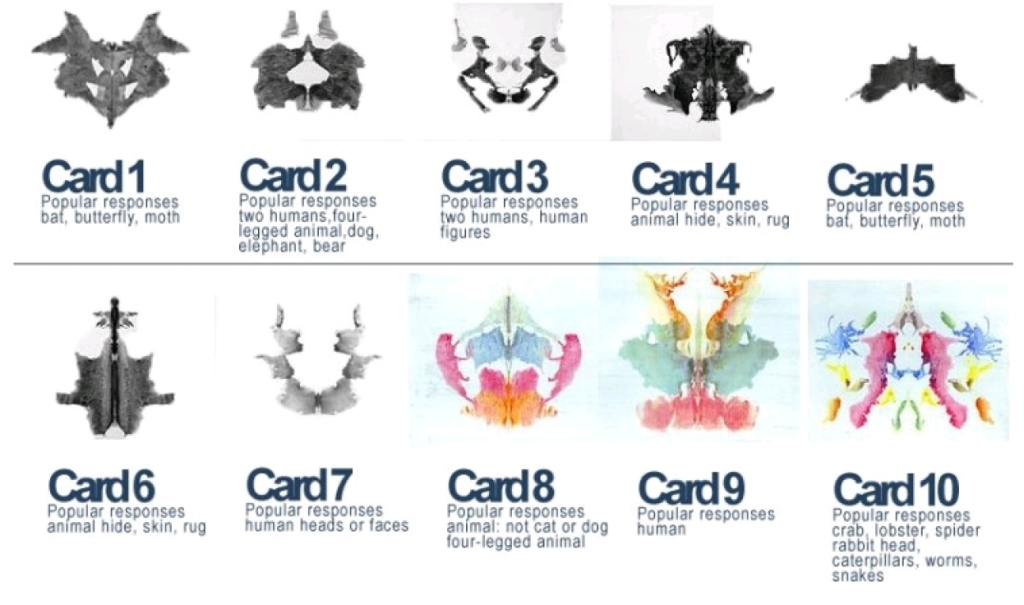
Rorschach test cards consist of 10 pictures, all featuring symmetrical inkblots. Among these, 5 pictures are created using black ink only, 2 pictures using both black and red ink, and the remaining 3 pictures are hand-drawn by Rorschach using various colors.
The main purpose of this test is to stimulate the subconscious reactions of each subject by using ambiguous and abstract images and to confirm the subject’s interpretations of these patterns. Thus, the Rorschach test is characterized by its aim to explore the inner world and the unconscious of each individual.
Parodying
I found it fascinating that within a single image in the testing process, various shapes and forms can be perceived, allowing for insights into an individual’s psychology. I wanted to focus on the creativity that abstract images bring to the psychological testing process.
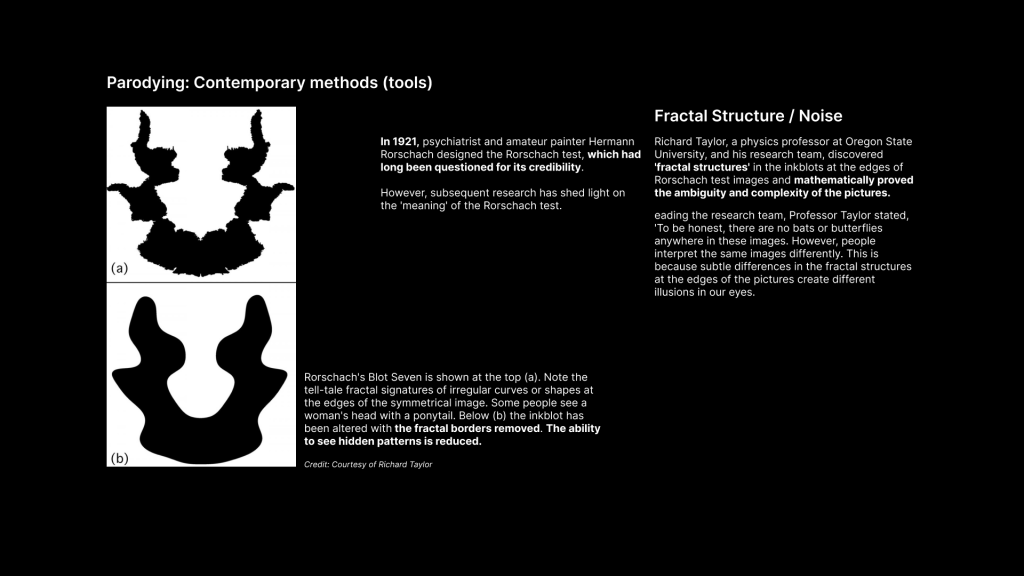
With this in mind, I aimed to use modern technology to reproduce and mimic Rorschach images.
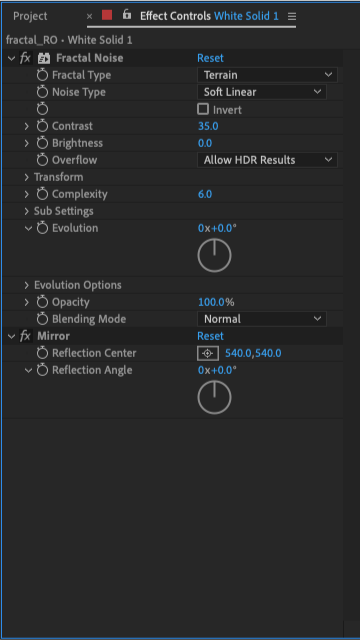
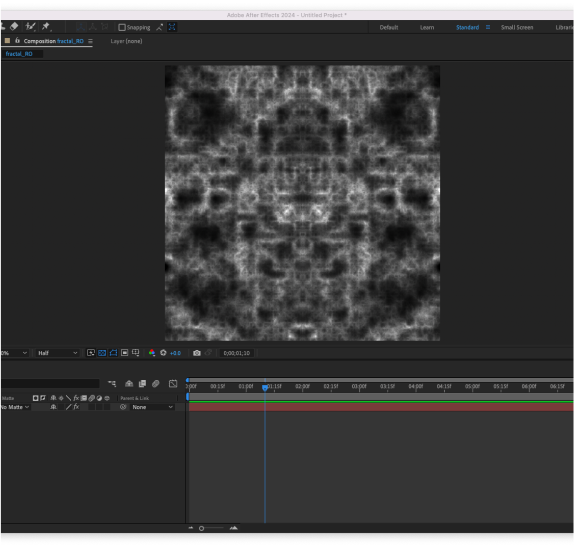
I used fractal displacement in After Effect to create random noise. Created symmetrical graphics with a mirror effect like Rorschach using the decalcomani technique.
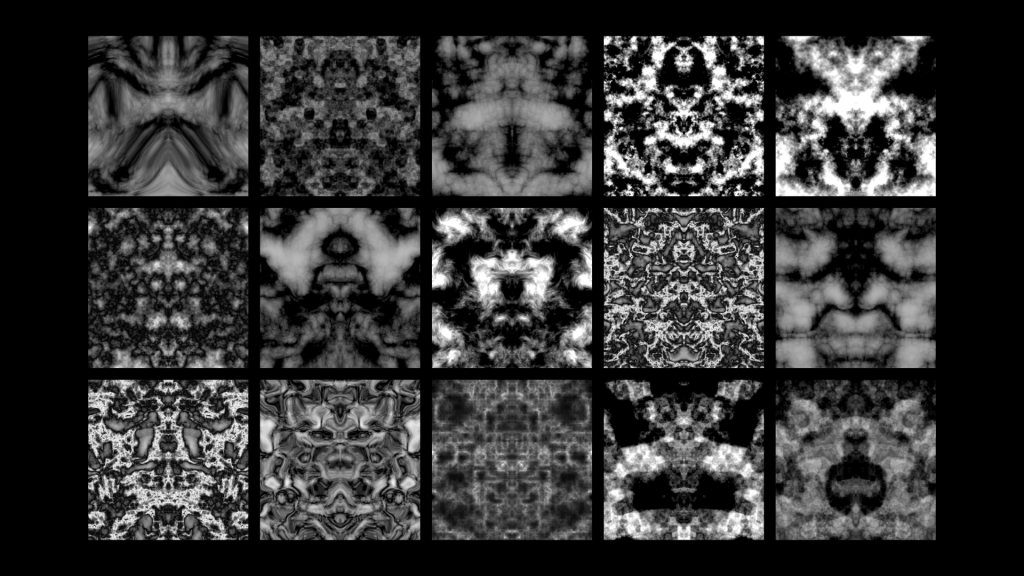
Scoping
I scoped through the photos I’d created to catch any images that looked interesting.

Extrapolating

I created a survey to see what others thought.
Feedback:
- Your early experiment was a kind of active translation, a kind of abstraction or simplification. Maybe it’s not abstraction because the pictures were already abstract, but it’s a kind of formal simplification.
- They (Original Images) don’t have enough detail to suggest that they could be anything except for just shapes. Whereas the fractal edges suggest something of detail that can be kind of interrogating. You can put meaning in there.
- It’s sort of an arbitrary or a kind of meaningless filter to put on it that just makes the images different.
- They’re equally non representational so that they are also open to interpretation because they don’t actually represent anything.
- But it doesn’t change our understanding of the original material (Rorschach Test).
- ** I think you’re trying to kind of reintroduce the protocols of the Rorschach test, but without a clear indication of how that’s going to compare or be different from what you would get with the original images. **
- The test invented 1921, so the landscape of visual media is very different. ** What would be the kind of contemporary equivalent to a Rorschach test? **
- They’re kind of like horoscopes right where you can read whatever is relevant to you in that. Everyone has had an experience that somehow relates to this very generic mean.
- Perhaps different types of visual material that can replace the or translations of the test with new visual material or translations of the visual material to do something else rather than test types of psychological states.